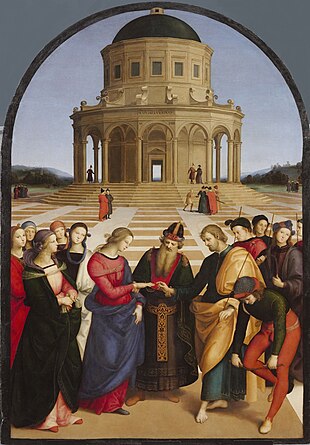
Italian Renaissance Art Explained
Italian Renaissance art marks a pivotal moment in history, highlighting a surge of creativity that emerged during the 14th to 17th centuries. This era was characterized by a revival of classical learning and values, which profoundly transformed the arts.
Some key aspects to appreciate include:
- Humanism: A focus on human experience and emotions.
- Naturalism: An emphasis on realistic representation of subjects.
- Emotion: Artworks that depict profound emotional depth and connection.
Each piece serves as a visual narrative, embracing the spirit of innovation and exploration that defined this extraordinary period.
Italian Renaissance Art Explained
Building on the transformative ideals of the Italian Renaissance, art during this era is celebrated for its rich exploration of human experience. Artists sought to convey the beauty of the human form and emotion through their works.
Key elements that define this fascinating style include:
- Realism: Achievements in anatomy and proportion.
- Innovative Techniques: Use of perspective to create depth.
- Cultural Themes: A blend of mythology and religion that resonates with viewers.
Each masterpiece invites us to step into a world of enlightenment and creativity, showcasing the brilliance of this golden age.
Overview of Italian Renaissance Art
Introduction to Italian Renaissance
The Italian Renaissance, flourishing from the 14th to the 17th century, marked a profound shift in cultural and artistic paradigms. Rooted in a revival of classical antiquity, this period championed humanism, fostering an environment where creativity could thrive.
Characteristics of Italian Renaissance Art
As we delve deeper, Italian Renaissance art is marked by several defining characteristics:
- Naturalism: Artists aimed for life-like representations, focusing on human emotions and anatomical accuracy.
- Perspective: A pioneering use of linear perspective created a sense of depth, drawing viewers into the artwork.
- Classical Themes: Many works draw inspiration from ancient Greek and Roman mythology, blending it with religious narratives.
These features combined to produce iconic works that continue to captivate and inspire audiences worldwide.
Key Artists of the Italian Renaissance
Leonardo da Vinci
Leonardo da Vinci, often hailed as a true polymath, blended art and science seamlessly. His masterpieces, like the “Mona Lisa,” showcase his understanding of anatomy and light—stunning examples of Renaissance innovation.
Michelangelo Buonarroti
Michelangelo, known for his larger-than-life sculptures like “David,” exemplified Renaissance ideals through his profound understanding of the human form. His work on the Sistine Chapel remains a pinnacle of artistic achievement.
Sandro Botticelli
Sandro Botticelli, famous for “The Birth of Venus,” infused his art with lyrical beauty and mythological themes, revealing the era’s spirit of exploration and fascination with human beauty.
These artists not only defined an era but also laid the foundation for future generations, creating a legacy that endures today.
Themes and Subjects in Italian Renaissance Art
Religious Paintings
Religious themes played a significant role during the Italian Renaissance, reflecting the period’s deep spiritual beliefs. Artists often depicted biblical narratives, creating works that aimed to inspire faith. For instance, Michelangelo’s “The Last Judgment” captures the dramatic essence of salvation and damnation, leaving viewers in awe.
Portraiture and Human Anatomy
In addition to religious scenes, portraiture flourished, emphasizing individuality and the complexities of human emotion. Artists like Leonardo da Vinci meticulously studied human anatomy, resulting in realistic depictions of their subjects. Notable works include the enigmatic expressions found in the “Mona Lisa,” making us ponder the psychological depth of its subject.
These themes reflect both the Renaissance ideals and the artists’ dedication to portraying the human experience.
Techniques and Innovations in Italian Renaissance Art
Perspective and Depth
An essential innovation of the Italian Renaissance was the development of linear perspective, allowing artists to create an illusion of depth on a flat surface. By utilizing vanishing points and horizon lines, works like Raphael’s “The School of Athens” guide the viewer’s eye into an expansive space, enhancing the realism of the scene.
Chiaroscuro and Sfumato
Equally significant were the techniques of chiaroscuro and sfumato. Chiaroscuro involved the dramatic contrast between light and shadow, enabling artists to model forms three-dimensionally. Leonardo da Vinci’s mastery of sfumato—fusing colors and tones—created soft transitions and a smoky effect, as seen in “Virgin of the Rocks.”
Together, these techniques revolutionized art, bringing new dimensions to the aesthetic experience.
Impact and Legacy of Italian Renaissance Art
Influence on Western Art
The effects of Italian Renaissance art extend far beyond its own era, profoundly influencing Western art for centuries. Artists like Caravaggio and Rembrandt drew from the techniques and themes established during this period, shaping artistic movements such as Baroque and Classicism.
Preservation and Conservation of Artworks
Today, efforts to preserve and conserve these masterpieces are paramount. Institutions like the Uffizi Gallery and the Louvre employ advanced techniques to maintain the integrity of renowned works. This dedication ensures that future generations can appreciate the skill and beauty of artists who paved the way for modern creativity.
The enduring legacy of the Italian Renaissance art continues to inspire and captivate the world.
